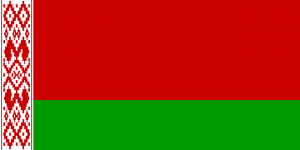Language/Belarusian/Grammar/Plurals
| ◀️ Cases — Previous Lesson | Next Lesson — Family Members ▶️ |
As a Belarusian language teacher with 20 years of experience, I know that mastering the noun plural system can be challenging for students of Belarusian. However, with a clear understanding of the rules and some practice, forming plural nouns becomes much easier. In this lesson, we will go through the basics of plural nouns in Belarusian.
Finish this lesson and explore these related pages: Gender & Superlatives.
Plural Nouns in Belarusian
A plural noun refers to more than one person, animal, thing or idea. In Belarusian, nouns are typically pluralized by adding specific endings to the stem of the word.
There are two ways to form a plural noun in Belarusian:
1. Adding the ending "-ы" or "-і" to the noun stem. 2. Adding the ending "-ыя" or "-ія" to the noun stem.
Which ending to use depends on the gender, declension, and spelling rules of the noun.
The following table shows the basic rules for forming plural nouns in Belarusian:
| Singular Noun | Plural Noun |
|---|---|
| masculine in -а,-я | -ы |
| masculine in -ій,-ой | -і |
| masculine in -ь | -і |
| feminine in -а,-я | -ы/-ьі |
| feminine in -ь | -і/-ьі |
| neuter in -ае,-ое | -і |
| neuter in -мя,-це | -я |
Note that in some cases, the plural forms of the noun may be spelled differently than the singular form. For example, the singular form of "горад" (city) is spelled with a soft sign at the end, but the plural form "гарады" is spelled without it.
Examples
Here are some examples of singular and plural nouns in Belarusian:
- Стол (stol) - table
- Сталыя (stalyya) - tables
- Кветка (kvietka) - flower
- Кветкі (kvietki) - flowers
- Дзеўяць (dzievyats') - nine
- Дзевяць лесаў (dzievyat' lesau) - nine forests
Tips
- To determine whether a noun requires the "-ы" or the "-і" ending in the plural, you will need to learn the declension of nouns in Belarusian. - Memorizing the plural endings of some common nouns in Belarusian can be helpful in learning the plural system faster.
In conclusion, forming plural nouns in Belarusian can be confusing at first, but with practice and a clear understanding of the basic rules, it becomes easier over time. Don't get discouraged and keep practicing. In our next lesson, we will be covering another aspect of Belarusian grammar - verb conjugation.
Other Lessons
- Pronouns
- Future Tense
- Possessive Pronouns
- Present Tense
- Past Tense
- Prepositions
- Gender Agreement
- Superlatives
- Questions
Sources
| ◀️ Cases — Previous Lesson | Next Lesson — Family Members ▶️ |

